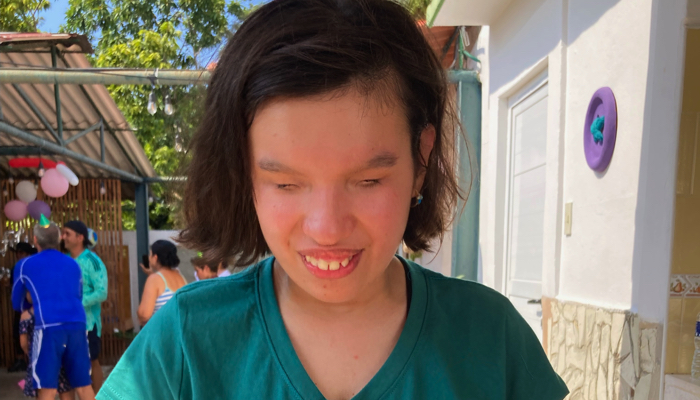Learn About the Eye

This post may contain affiliate links; please see our terms of use for details.
The eye is a very complicated organ that attaches directly to the brain. If you think about it, the eye is really an extension of the brain itself. This is why children with unexplained vision loss are often referred to a neurologist. If your child is experiencing any type of vision loss, you will want to become more familiar with the eye and how it works.
Most of the information below is adapted from the book Children with Visual Impairments: A Parent’s Guide. This book, along with others on our Beginner’s Book List, is a must-read.
The Optical System
The optical system is the part of the eye that receives and focuses light. The optical system consists of the following parts of the eye:
- Cornea: The clear dome at the front of the eye. It needs to be smooth, evenly curved, and clear so light can pass through it. The cornea is the only part of the eye that can be transplanted.
- Anterior Chamber: Space between the cornea and iris. It’s filled with a fluid called Aqueous.
- Iris: The colored part of the eye. The iris regulates the amount of light that enters the eye as it dilates and constricts. The Pupil is really just a hole created by the doughnut-shaped iris.
- Lens: Focuses light on the back of the eye by changing shape (getting fatter and thinner).
- Scelera and Choroid: The scelara is the white part of the eye and beneath this is the choroid, which carries nourishment to the eye.
- Retina: Collects light through millions of cells (light receptors) and sends this signal back to the brain through the Optic Nerve.

The Nerve System
The nerve system is made up by the retina’s light receptor cells and the optic nerve. There are two types of receptor cells:
- Cones: Located in the center of the retina (called the Macula), cones allow us to see detail and color.
- Rods: Responsible for peripheral vision and allow us to see in dim light (night vision).
The Movement System
There are six muscles that control eye movement. When the muscles are aligned properly, the eyes can fuse their separate images into one three-dimensional image. This is called depth perception.
Causes of Visual Impairment
There are so many different parts of the eye that can be damaged and cause vision loss, but usually you’ll be dealing with one of three broad causes:
- Structural Damage: Damage to one or more parts of the eye.
- Refractive Errors: Inability of the eye to focus images on the back of the retina.
- Cortical Visual Impairment (CVI): Damage to the part of the brain that interprets visual information.
For more information on how the eye works and what can cause vision loss, read the first two chapters in Children with Visual Impairments: A Parent’s Guide. Also, check out The Blind Babies Foundation Fact Sheets. These sheets are full of information and easy to print right from your computer.
Related Posts

Eye Conditions and Syndromes
Does Screen Time Affect Kids’ Vision?
Too much screen time can affect kids’ vision by causing eye strain, blurred vision, dry eyes, and even nearsightedness in children and adolescents.

Eye Conditions and Syndromes, Support, Visual Impairment
Coping with a Diagnosis: Emotional Support for Families with Visually Impaired Children
Families with emotional support are more resilient. Learn how to establish emotional support with peers, professionals, and the community to help your family thrive.

Eye Conditions and Syndromes
Finding Joy and Strength in Raising a Child with Anophthalmia
When raising a child with anophthalmia, be patient, be kind to yourself, and take it one day at a time. Your child will fill your life with love!